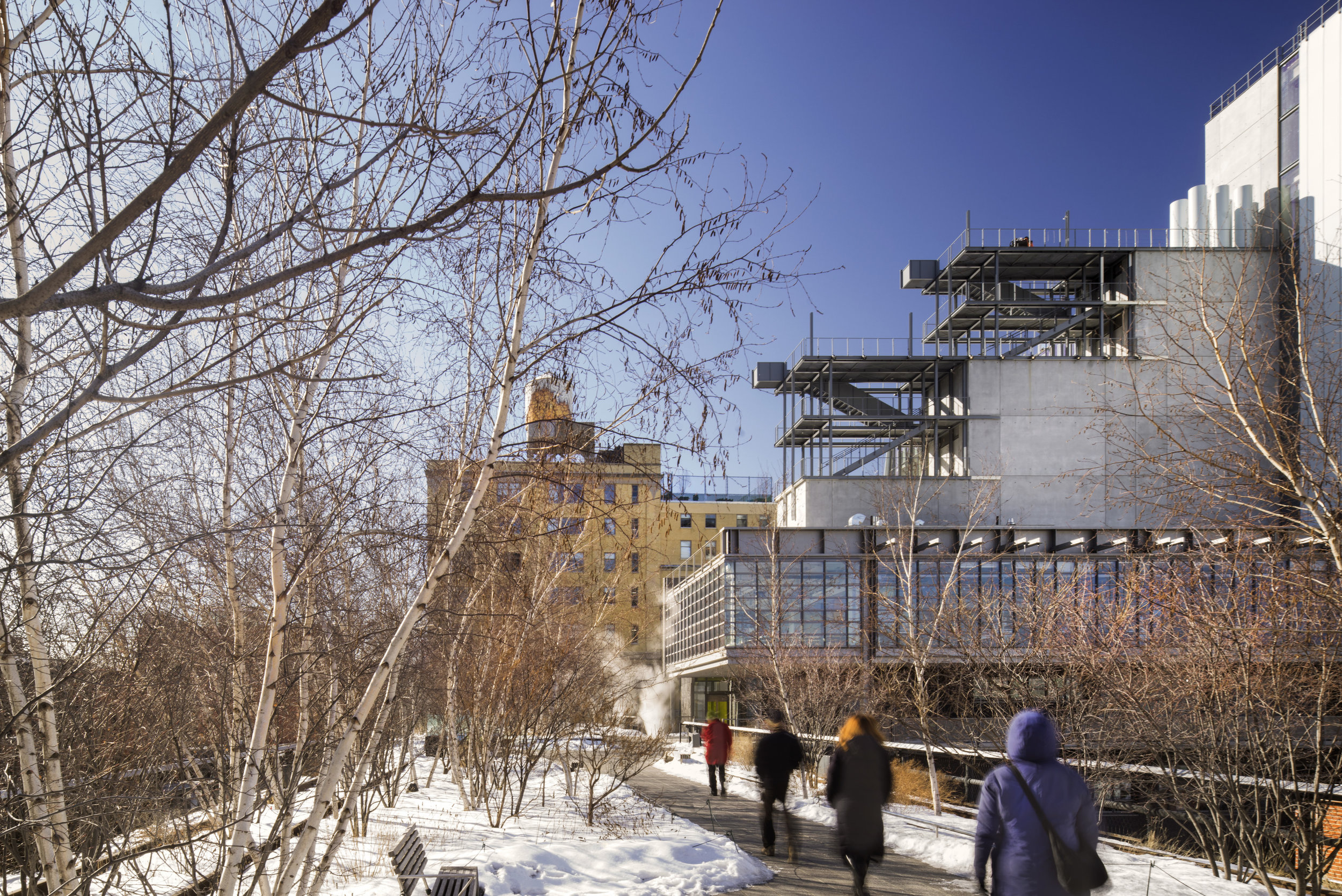Museums and Motherhood: Erin Flynn on The Type of Architect She Wanted to Be
By Julia Gamolina Erin Flynn is an architect and a museums-specialist at Cooper Robertson, and a mother of two. She has worked on the new Whitney Museum of American Art and the Museum of Modern Art, and continues to add to the list of NYC museums with her current work as executive architect on the Studio Museum in Harlem and the New Museum. Before Cooper Robertson, Erin worked on various other project types at KPF and Allied Works. She hails from Oregon and earned her Bachelor of Architecture at the University of Oregon. In her conversation with Julia Gamolina, Erin talks about finding the right projects to work on and integrating motherhood with her career, advising young architects to be intentional in their focus within the profession.
JG: How did your interest in architecture first develop?
EF: Naively [laughs]. I knew a couple of architects when I was in high school, and the ones I knew best happened to be women. From my vantage point, it looked like they had a really nice life-work balance [laughs]. I know. One was the wife of my father’s law partner - she worked for a larger firm, but was able to work from home, and she just seemed like she had it all figured out. I think most people think that there is a marriage between math and art in architecture – my math skills are laughable now, but at the time I thought I could do something like that. I went to architecture school at the University of Oregon not really knowing anything, telling myself I would leave if I didn’t enjoy it, and I ended up loving it.
Take me through your professional path, from your first job until now.
My professional path has definitely been a process of elimination in figuring out what it is that I want to be doing. I first landed pretty softly at Allied Works. Brad was just opening up the firm in Portland, had a great project with Wieden+Kennedy, and I started working there while still in school. Being there felt very much like a continuation of studio, so was very comfortable and fun and I enjoyed it a lot. Eventually, I wanted to leave Portland. I had two acquaintances in New York, so I moved here, and fell in love with the city.
I started with a firm that was very small and just focusing on residential – I was only there for four months because I wasn’t enjoying it and realized I didn’t necessarily like residential work. I’m going to be saying that a lot – realizing all the different things I didn’t like [laughs]. I moved to a firm that did really thoughtful renovations for institutions. I worked on the Carnegie libraries and a few projects at Yale, but my main focus was a new Catholic Church in Queens, which was really exciting. It was 5,000 square feet with a small budget, but I had a huge hand in designing and documenting it, and I really loved that process. We were halfway through construction when I realized it was time for me to leave that firm – in some ways, it was starting to feel too small. I thought I wanted something opposite, so I went to KPF.
A completely different direction!
In retrospect, KPF was also the wrong fit as it was too much in the other direction. There I learned that I didn’t really enjoy working with developers or corporations, because in those projects, KPF would design the building through Design Development then hand off to another firm to take through until the end. That’s not the type of architect I wanted to be – I wanted to start with design and finish with construction; really understand the details that make a building a building, and I was taken out of that process at KPF.
However, I did work on my first museum project while at KPF, which was MoMA. They were the executive architect for Yoshio Tanaguchi. I was brought in very late in the process, but I was able to stay through the construction and take on areas that had not been yet designed - mini projects within a larger project. Prior to that, I had started looking outside of architecture to see if there was something better for me. Once I got MoMA, and got settled in MoMA, I stopped that search and realized I was indeed an architect and I should just live with it [laughs]. Finding the right projects are really important, and working on a museum, where the mission is to support the art and artists, was a really pivotal moment for me.
Is that when you decided to join Cooper Robertson and focus solely on museum projects?
No, that was when I had a baby and decided to forget all I had learned and work with my husband who did mostly development work [laughs]. Priorities changed. He and his partner were very generous and made me a partner there very quickly and it was by far the best work-life balance I’ve ever had.
Then 2008 happened, and having all of our eggs in one basket, we changed everything. We moved out of the city, we didn’t work together anymore, we did a whole bunch of different things. When we moved, he went to work for a local firm, and I stayed home with the kids – by then we had two kids. Six months later, I got a call saying that Cooper Robertson was looking for someone with museum experience to work on the new Whitney Museum. I started that conversation, and realized the opportunity was something I couldn’t pass up.
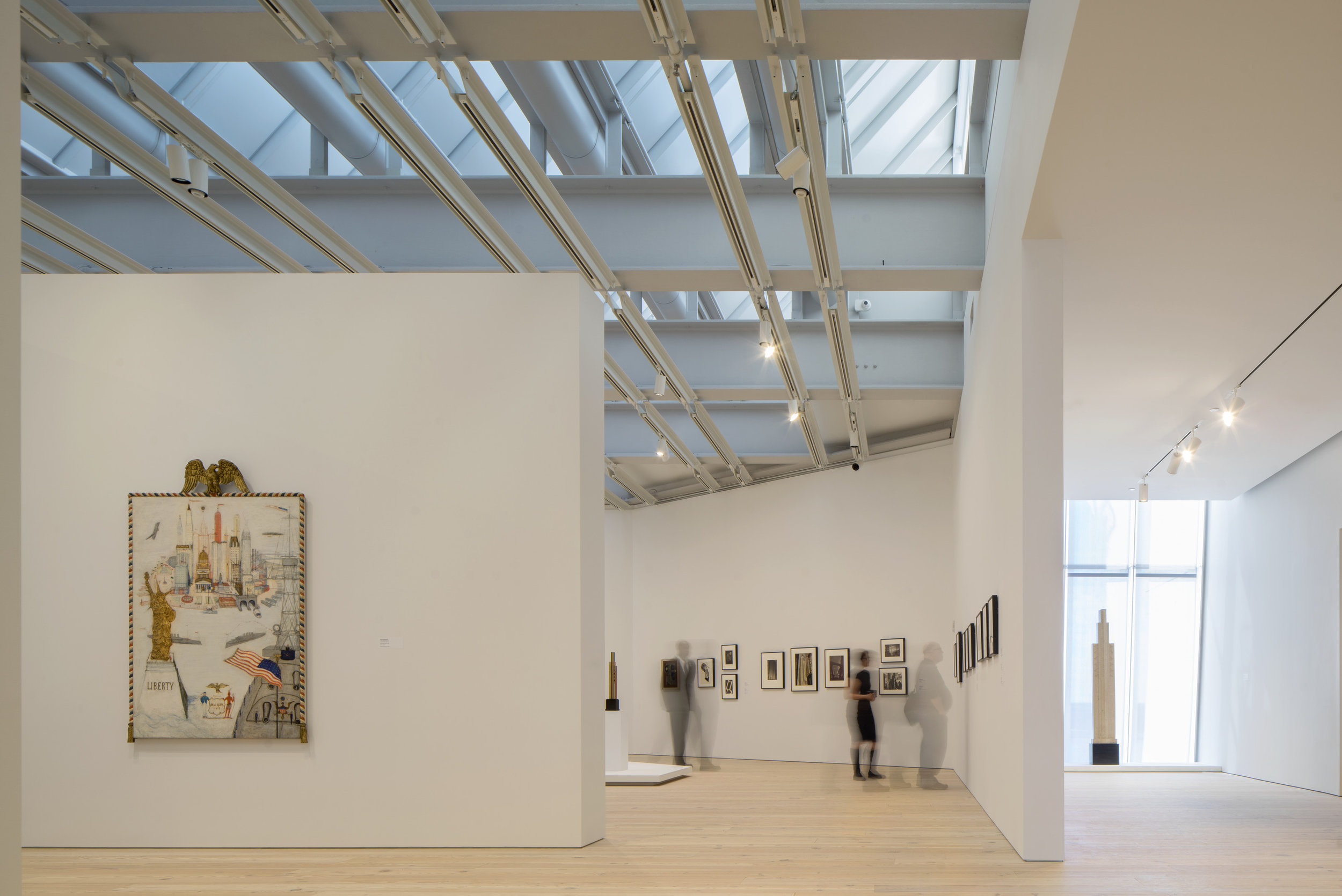
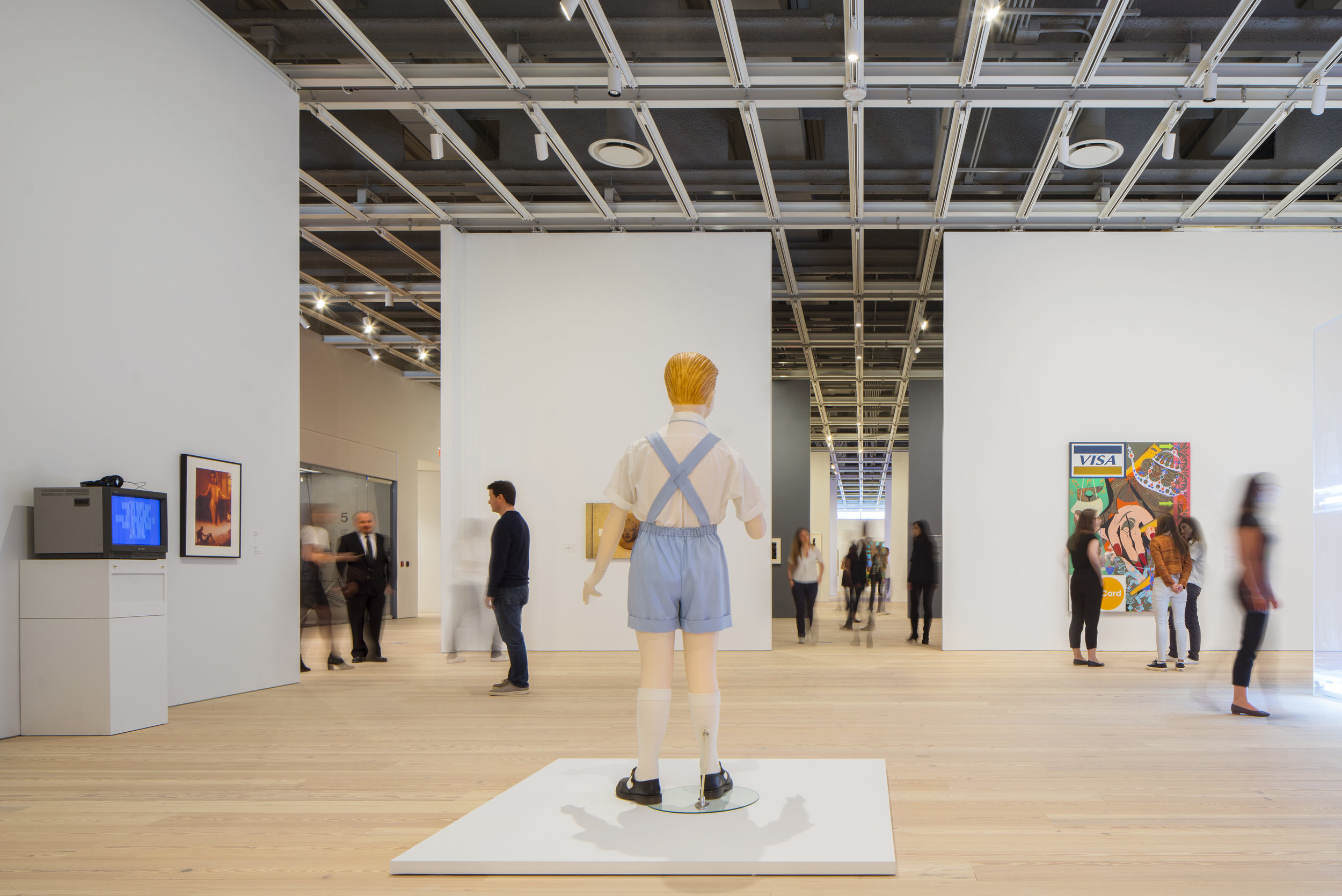
Having built this expertise in museum projects, what have you learned about managing them and managing your team?
I’m still figuring it out. I am not a natural manager - I’m someone who really likes to sit at my computer and solve problems. Management gets more complicated too because I work remotely from home at least half of the week; having limited facetime adds a level of complexity to something that’s already not natural for me. I’ve learned that because I’m always in meetings and not doing the drawings myself, I have to rely somewhat on people to let me know when there are problems. Managing is really two ways – I need people to give me information so that I know what the next step is, so I always encourage my team to communicate in that way.
How has your role on projects changed as you’ve gotten more and more senior in the profession?
When I was first starting out, I loved meetings because the conversations I was exposed to were tools for learning. Now, I don’t enjoy meetings as much [laughs]. This is something I’ve been thinking about. During my last review, the partners asked me where I wanted to be in ten years. Instead of answering, I asked, “Where do you see me going when you know that I really just want to be a project architect?” I don’t want to be a manager and I don’t necessarily want to be a principal. I love the relationship to the drawings and construction and the more experience you have, the harder it is to stay in that realm. I’m still not sure of the answer, but the ideal for me is to stay in the project architect realm.
You are one of the few people to say this – most want to start and head up their own firms.
If I started my own firm, I would miss the exposure to different ways of thinking about design and building. Since I’ve been in the role of executive architect for the last several years, working on museums designed by someone else, I’ve realized that for me it doesn’t matter who the designer is as long as I’m working on a good building. In fact, I like working on different designers’ buildings because I get to see how they think and learn from them.
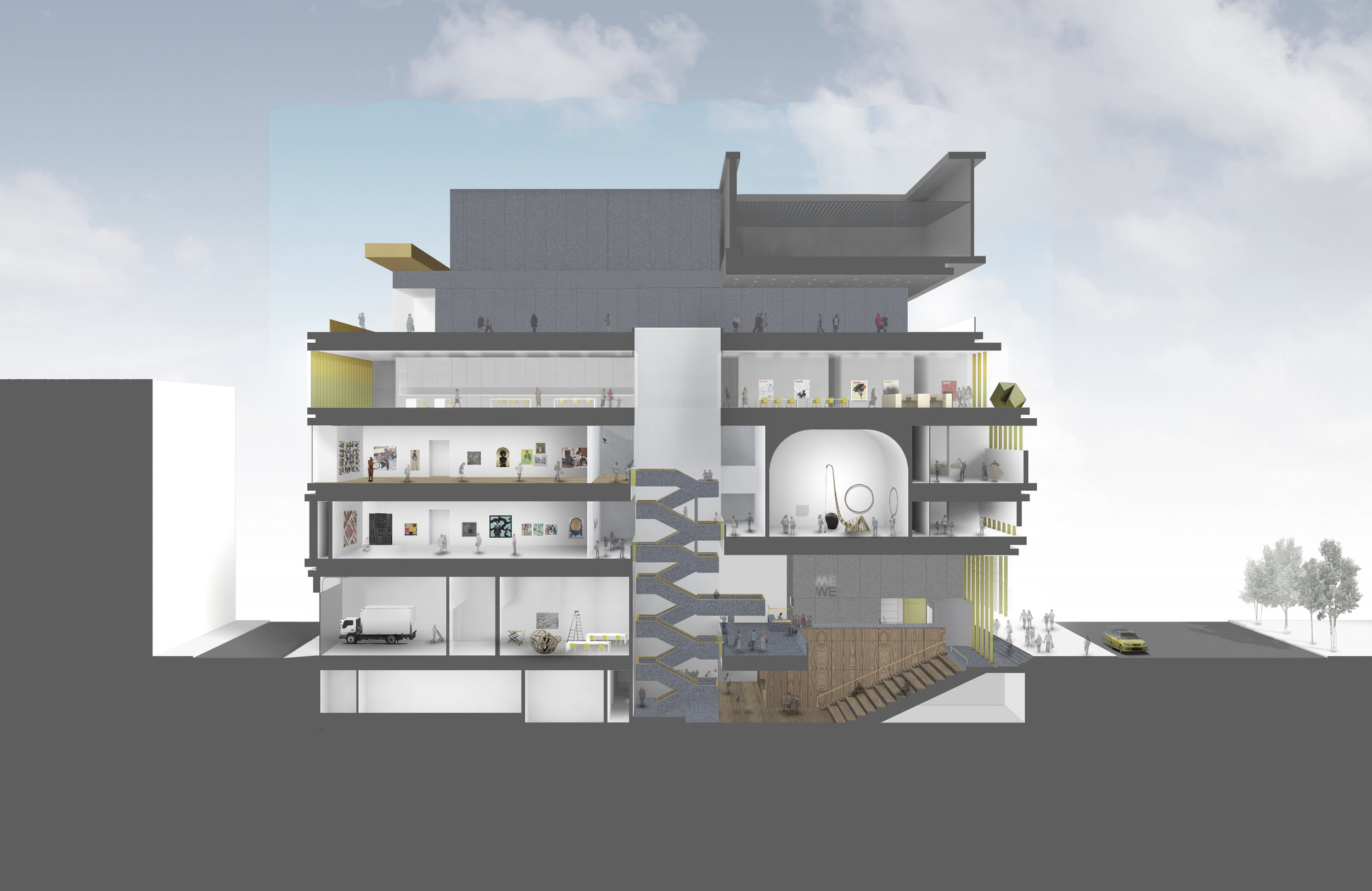
Your babies are older now! How have you been able to integrate motherhood with your career?
It’s very hard and only possible in my life because of my partner. He’s a better domestic person than I am [laughs], and he’s local. He also has a flexible schedule because he’s his own boss. Without that flexibility, I wouldn’t be able to do what I do. My parents are also nearby, so they help a lot. The reason I’m now working remotely is actually because I felt that I was missing out on the things that moms get to do and needed to be home more.
What have been some highlights throughout your career?
The church that I did early on was a really special project, definitely a highlight. The new Whitney was absolutely a highlight too - a really intense and wonderful project and I learned so much. Now I’m really enjoying working on the Studio Museum in Harlem – the people involved are wonderful and the building is a really special building. Aside from professional highlights, my husband and I survived designing and building a home for ourselves. Definitely harder than either of us imagined, but every day there is a moment when I’m thankful we made the effort.
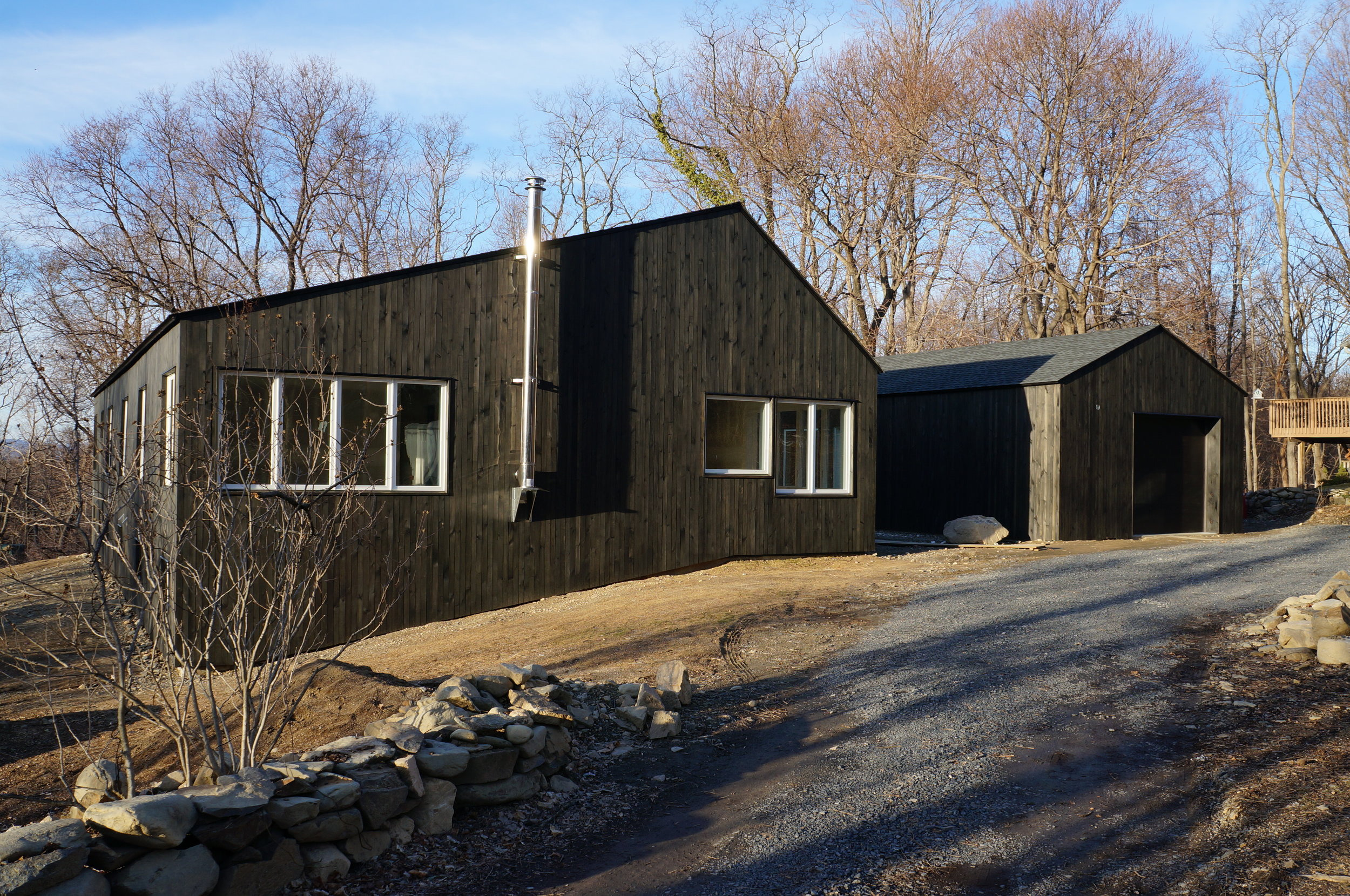
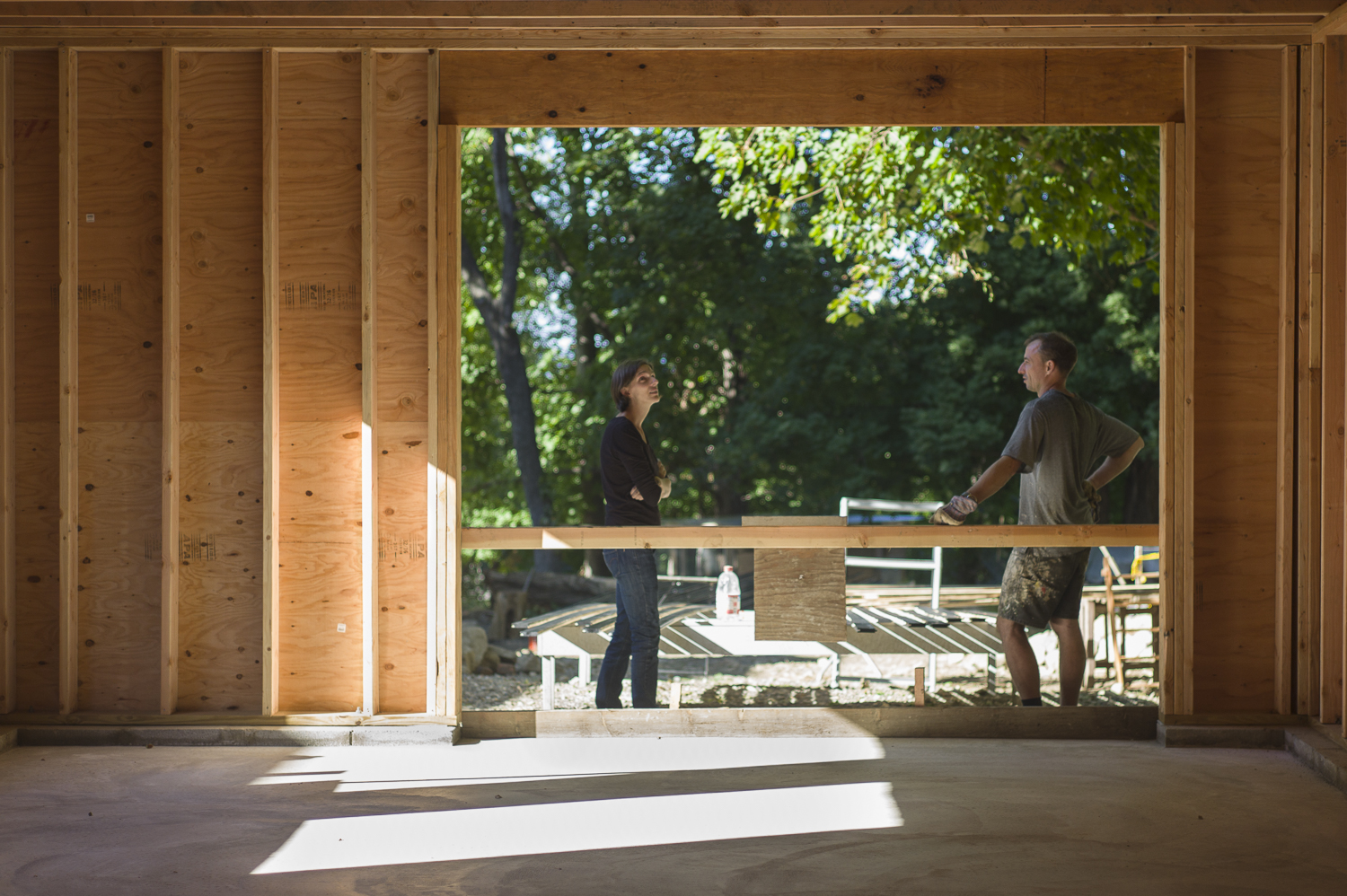
What are some of the biggest challenges you’ve faced?
The challenges and the highlights go hand in hand sometimes. The hours dedicated to the Whitney were definitely challenging. Going back to KPF, the moment of uncertainty about what I wanted to be doing and the searching but not really finding anything sustaining until I landed on the MoMA project, was a challenge.
What have been the biggest lessons that you’ve learned?
It’s not over until it’s built [laughs]. We’re human and we make mistakes, but as long as it’s not built, it’s still fixable. The best lesson for me though was that I could only focus my career path once I figured out what kind of architect I wanted to be.
Have you had any mentors along the way?
Of course. I had a really great manager at Allied Works, Paul Kinley. He really took time to explain things well and to put all the information out in the open - every day I realize I can’t live up to his standard. Laurie Butler at KPF was also a mentor of mine. I really appreciated how she handled things, but she also said at one point, during a Women’s Lunch, “Your mentor does not have to be a woman.” That was important to hear.
What are you most proud of?
Times I’m most proud are when I’ve figured out a problem. I’m thinking specifically about how we vented mechanical shafts at the Whitney [laughs]. We had all these interior shafts that terminated underneath terraces, but we couldn’t have vents that just popped through the terrace or pre-cast walls. The breakthrough was realizing that we were working with Renzo, who likes pipes [laughs]. There are now six large flues venting all those interior shafts. Luckily Renzo agreed, otherwise, I’m not sure I know how that problem would have been solved.
What’s next for you?
I’m in my ideal position right now – a position where I’m still working with museums and I’m still connected to the drawings and the construction. I hope to stay on this path.
What advice would you give to young architects?
To define what kind of architect you want to be. There are many different types – someone who is a really strong designer, someone who likes the construction process, someone who likes small quick projects like retail. Young architects should ask themselves about what type of architecture aligns with them, and then go for it.
